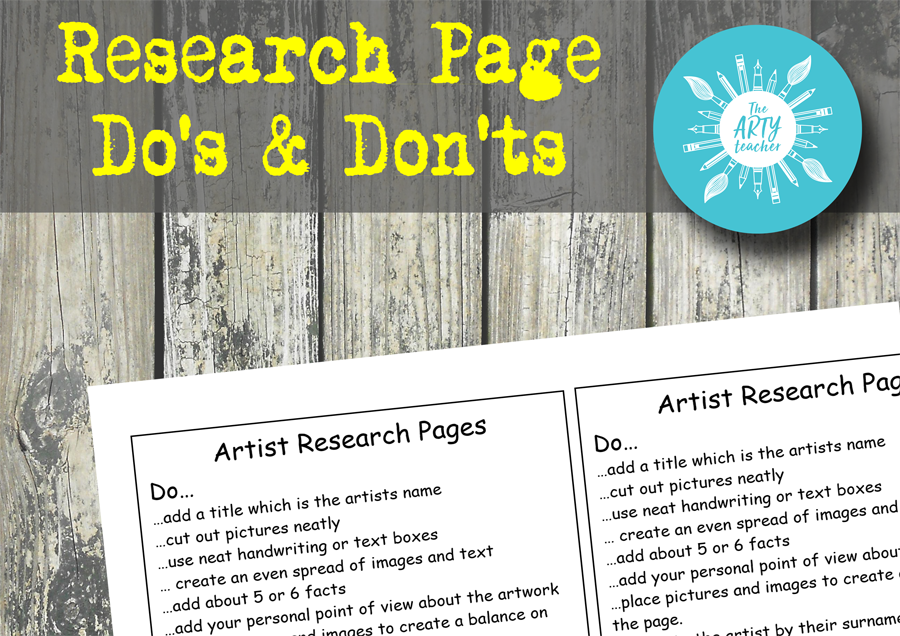
Attention Grabbers aka How to Get Quiet in the Classroom
In the States they are called ‘attention grabbers’, here in the UK it would be part of your behaviour management strategy, but whatever you call it, ways to get your students to be quiet are an essential part of your teacher tool kit.
Here are some tried and tested strategies used by art teachers around the globe.
Positive Phrases
More than anything else when I want a class to listen, I say ‘Ok, listening.’ and that is usually enough. (We all have stock phrases that we use out of habit more than anything else.) I’d describe it as a neutral command. Not positive or negative.
Are any of the instructions you regularly give negative? Do you use them out of habit or is it a carefully thought through phrase for positivity and quiet? It is essential to keep a positive atmosphere in your classroom if you want your students to thrive. See how you can modify a negative phrase to a positive one:
'Look at me, I don't want to see the back of your head.' 'Look at me, I want to see all your lovely faces.'
I've just asked for quiet and you're still talking! This table is beautifully quiet.
Stop Talking! I'm waiting for beautiful listening.
Of course, you can tweak these phrases to what you are comfortable with.
Call and Response Attention Grabbers
You can really have fun with training your students to use a call and response. Possibly the well known is ‘Mona Lisa’. You train your students so that when you say ‘Mona’, they shout back ‘Lisa’. You do this twice so that the students who didn’t join in the first time, join in the second time. It’s fun and, for me, works like a dream. This is a well-known call and response method. Art teachers tend to love it or hate it. Another call and response phrase that I heard of recently is where you say ‘Hear ye, Hear ye’ and students respond ‘All Hail the Queen of Art’. (Or King).
Do this and you will have made being quiet fun.
Another type of call and response is clapping patterns. You clap out a pattern and students have to copy it. You then clap another pattern and they copy that. The concentration required to do this means that silence follows.
Power Phrases
A ‘power phrase’ assumes that students always behave for you. You are stating a fact with authority and it needs to be delivered with a stern face and low tone*. It can be put into action when one student talks when you are talking to the class to nip things in the bud. If you ask a student to be quiet and then they aren’t quiet, you put yourself in a very difficult situation. This could escalate. Give the student a steely stare and say one of these:
“I’m used to students listening to me when I speak.”
“Students don’t speak when I am speaking in my class.”
“We don’t do that here.”
*Never screech. You’ll soon earn a reputation of not being able to control the class if you do. Research shows students respond better to a low tone of voice.
Count Downs
Count downs seem a little ‘primary school’ to me, but I have to admit, that when students don’t gather around the table quickly enough to see my demonstration I use a count down and it works. If it works, use it.
You can turn this into a game called ‘Beat The Teacher’. You say ‘Eyes on me in 5, 4, 3, 2, 1.’ The sooner they stop, the higher the number, so keep a tally. Tell them their total at the end of the lesson. If their score goes up next lesson, they can earn a reward. I’d only resort to this with a really difficult class where you are willing to put in this sort of effort.
 High 5
High 5
This is a ‘physical cue’ that teachers have found success with. Say ‘High 5’ and place your hand up in the air. The class all does the same having been instructed that when you do so they are to put their hand up and stop speaking.
Doorbells
Some teachers love using wireless doorbells in their classroom. This is especially useful if you are finding talking and trying to get quiet is putting a strain on your voice. There is a huge range on Amazon.co.uk and Amazon.com. With the remote in your pocket and a variety of different, calm sounding chimes, it can put you in complete control.

If you have enjoyed this blog post about attention grabbers, why not register to be kept informed. You will also be able to download 3 of the art teaching resources that are categorised as free each month too.
As an Amazon Associate, I earn from any qualifying purchases.





I work in an SEMH school and my primary and early secondary students respond really well to Beat the Teacher. Ive just taught it to the new NQTs and they think its amazing!
Thanks for all your gorgeous resources x
It’s great to hear when a strategy is working. Different strategies work in different environments. I have used the Mona Lisa call and response for years and it’s worked really well too.